A SPOTLESS TOWN IN SPOTTY CROW HILL (1903)
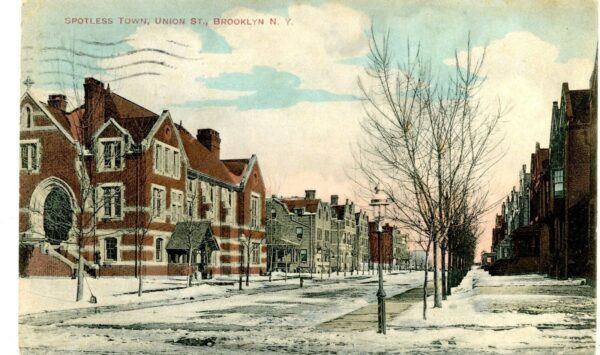
******************************************************************************************************************************** Brownstone Detectives investigates the history of our clients’ homes. The story you are about to read was composed from research conducted in the course of one of those investigations. ******************************************************************************************************************************** It was a novelty back then. An entire block of newly built houses was connected with underground cast iron heating pipes. “They’re all heated from a central heating plant,” the ad for the new houses stated. “To be free from worrying about the heating of one’s house is a blessing that you’ll appreciate.” “SPOTLESS TOWN” Frederick W. Rowe built them, and may have been inspired to use the name by a recent Broadway musical of the same title (which incidentally featured “a pair of midgets in a baby elephant costume and a dog trained to grab culprits by the seat of the pants” – it closed after one week). Who could fail, though, to see the sense of using a known name – one which, additionally, augured cleanliness?. Buyers were more and more attracted by the new homes being built in this “Eastern Parkway” section of town. Previously known as Crow Hill, comprised of a collection of shanties and pig sties, it entered a transitional stage and would later become the upper middle class Crown Heights around 1915. And these buyers were less and less interested in living in homes that already existed in the older areas – that were…well….less spotless. So the choice of name seemed appropriate for marketing purposes. BUT…CENTRAL HEATING??? By 1903, while central heating of […]
A BUILDER, A BRIBE, & A BLOCKED VIEW (1904)
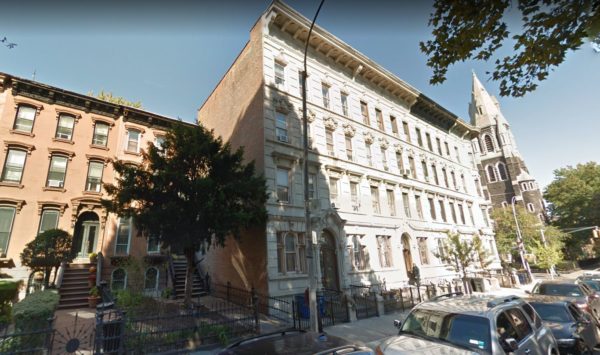
******************************************************************************************************************************** Brownstone Detectives investigates the history of our clients’ homes. The story you are about to read was composed from research conducted in the course of one of those investigations. Do you know the history of YOUR house? ******************************************************************************************************************************** After builder Chauncey G. Cozine had filed his building plans for a set of luxury apartment buildings to be constructed at the northwest corner of Throop Avenue and MacDonough Street, the neighbors were horrified to learn of the enormity of the structures. As a matter of fact, they were so taken aback at the prospect, that when they met to determine how to address the egregious assault on their homes, they dug deeply into their pockets – each of them as deep as he felt it was worth – to come up with a sum that, combined, would hopefully encourage Cozine to consider altering his designs. When Cozine received the offer, though, the 30-year-old builder answered the monetary plea with a curt one-word response. “No.” BEFORE THE FOUNDATIONS WERE EXCAVATED Before Cozine came along in 1904, the noble brownstone structures with their stately front gardens which sat along the north side of MacDonough Street, commanded unobstructed views up and down the street. From the front stoop of any of these structures, which belonged, incidentally, to some of the wealthiest residents of Stuyvesant Heights, could be seen rows of beautiful brownstone houses and the majestic churches of two different denominations. At the Tompkins end of the block, sat the Tomkins Avenue Congregational […]
THE SLOW MUTATION OF “THE REGINA” (1902)
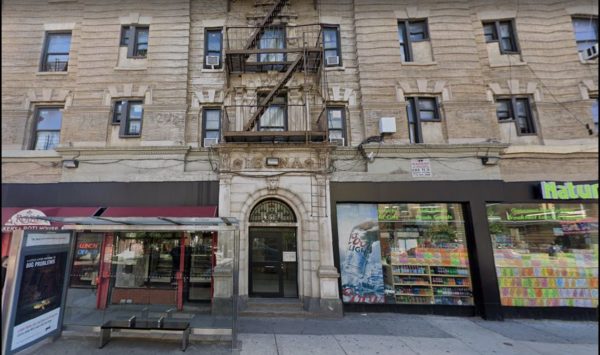
******************************************************************************************************************************** Brownstone Detectives investigates the history of our clients’ homes. The story you are about to read was composed from research conducted in the course of one of those investigations. Do you know the history of YOUR house? ******************************************************************************************************************************** In the historical research work we do for clients, we uncover old photos of their buildings in newspapers and in other archives. It is common to see that changes have taken place with these structures over the years, but these changes are not always readily apparent. Check out the following pics of this Crown Heights apartment building. See what you notice has changed in almost 120 years. Caption: “This is a picture of the Regina, a large apartment house recently bought by John Mollenhauer, the sugar refiner. It stands on the southwest corner of Nostrand avenue and Pacific street. It was built by E. J. Maguire. The building is in the heart of the St. Marks section. The transaction was partly exchange and partly cash. The building is valued at $90,000. Mr. Mollenhauer has invested extensively in property in the St. Marks section, owning several other apartment houses built by Mr. Maguire and many fine private houses. Mr. Mollenhauer lives in the Eastern District.” Follow @BrownstoneDetec Share ———————————————————————————————————————– The Brownstone Detectives Brownstone Detectives is an historic property research agency. Our mission is to document and save the histories of our clients’ homes. From our research, we produce our celebrated House History Books and House History Reports. Contact us today to begin […]
GOD’S OIL & LUBE SHOP (1903)
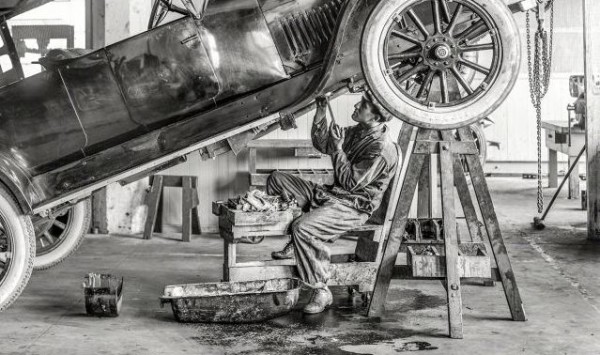
******************************************************************************************************************************** Brownstone Detectives investigates the history of our clients’ homes. The story you are about to read was composed from research conducted in the course of one of those investigations. Do you know the history of YOUR house? ******************************************************************************************************************************** By 1903, builder Wilfred Burr had moved into his second decade of house building, putting up brownstones and limestones around Stuyvesant Heights at a quick clip. Within his first decade in the profession he had managed to build hundreds of them. He was just 35, and was living with his wife, son, two daughters, and his mother-in-law (and two Swedish servants) at 555 Jefferson Avenue, but he was starting to become restless with the monotony. Able to purchase lots, put up buildings and sell them – almost with his eyes closed by this point – he began to look for something additional to do with his life outside of the construction business, seeking some way to spend his expendable income on an investment that excited him – something that was new and different. The new automobiles held that cache. They were fast, they were complicated – and his wife did not like him driving them. BUILDING THE AUTOMOBILE At some point, Wilfred and one of his bowling partners, secretary of the St. James Bowling Club, Robert W. Haff, had hatched the idea to bring a new and exciting automobile company to Brooklyn. This new-fangled piece of machinery was in its infancy, but more and more people – especially those with expendable […]
A BED-STUY BUILDER “GOES ASTRAY” (1891)
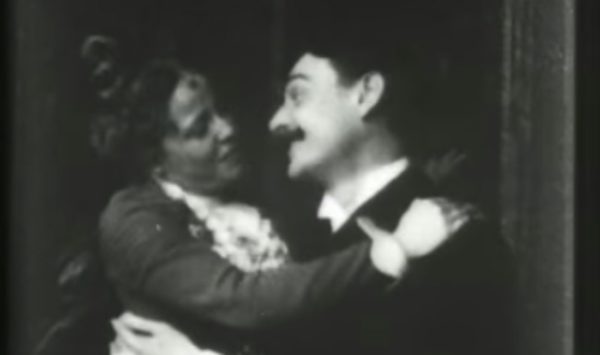
******************************************************************************************************************************** Brownstone Detectives investigates the history of our clients’ homes. The story you are about to read was composed from research conducted in the course of one of those investigations. Do you know the history of YOUR house? ******************************************************************************************************************************** One of the more colorful builders in the Bedford-Stuyvesant area before the turn of the century was Ransom F. Clayton. Clayton and his wife Hannah purchased entire blocks for development and became rich reselling land and building brownstones for occupancy. Clayton, approximately 60 years of age in the early 1890s, was the founder of the building firm Ransom F. Clayton & Son. In addition to being a builder, he had also been a jack-of-all-trades – a Civil War veteran, an inventor, a nominee for City Controller with the Prohibition Party, and a director and the treasurer of the Ocean Palace Elevated Railroad. In 1891, though, he could add to that list the title of “scoundrel.” For, in that year, having some years previous turned over the reins of his building firm to his son, Clayton was now being given the opportunity to lose the property in a highly publicized divorce scandal. Several newspapers of the time hyperventilated over the steamy details of the case, from the “plain black gown” that Mrs. Clayton wore to court, to the description of “the other woman,” Mrs. Margaret F. Oakley, who was “tall,” “finely formed,” and “richly attired,” and further to, finally, how the crowd in the packed court room erupted in applause when the […]
Brownstone Detectives on TV
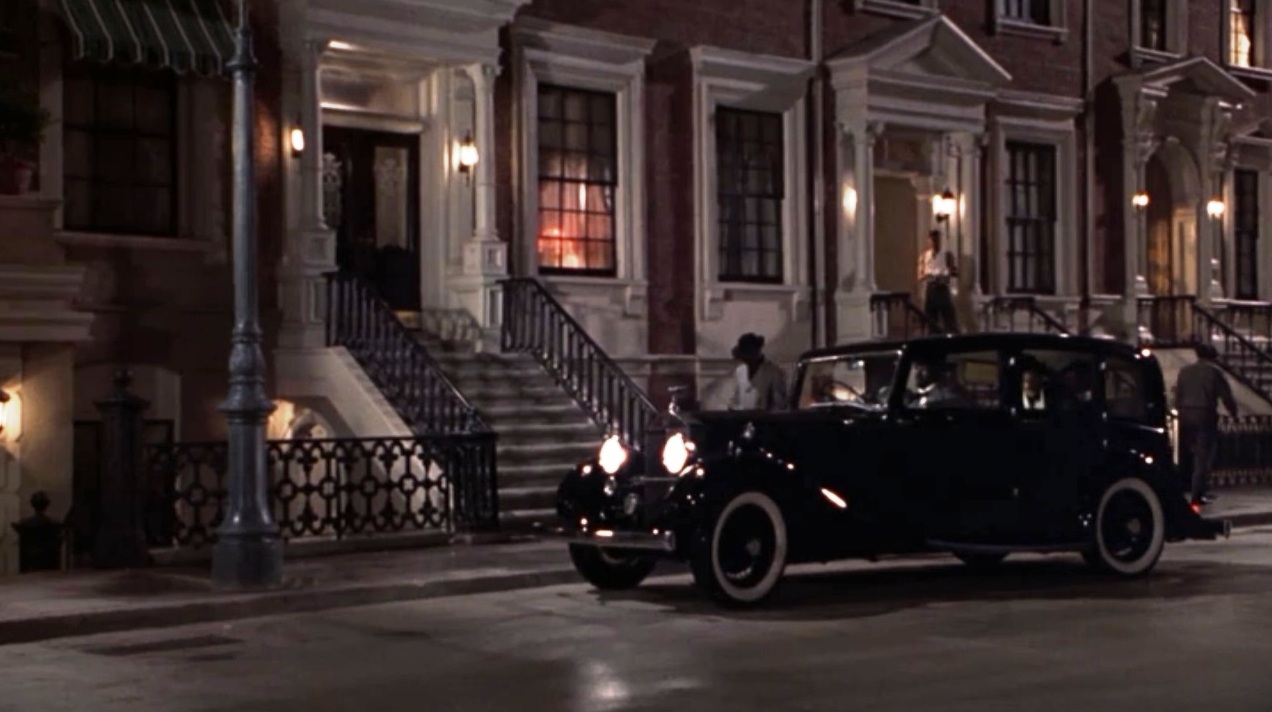
OK, all you house history fans! A certain TV network will be at Brownstone Detective H.Q. in May to begin filming an episode of a television series. The show will focus on the first family that lived in the house, The Corletts, and the “unfortunate occurrences” that seemed to emanate from the house in its early days. BAD LUCK? YOU DECIDE… It all started when the initial architect/builders of 738 Macon Street purchased the lot for the house and began building. About halfway through its construction, though, the house would go into foreclosure. About a year later, the man who would eventually finish building the house, Wilfred Burr, A.K.A. “Lucky 13,” would buy the foreclosure property in a tax sale. After the sale was completed, Burr had saved enough money in the purchase that he was able to add an additional floor to the home, increasing its number of rooms from 9 – to 13. Finally, after Burr completed the house, it would become the 13th house on the block. But the the odd luck didn’t end there. When the Corletts moved into 738 Macon Street, all seemed to be smooth sailing until the family matriarch, Margaret, passed away. Like dominoes, every year thereafter, until 1900, a Corlett would die – Margaret’s son, John; her son-in-law, Robert; and her daughter, Eleanor. At this point, Margaret’s remaining child, Robert, decided presumably to get his family away from the house. He sold the property to a flipper and moved the family to […]
Hijinks on Herkimer, Pt. II
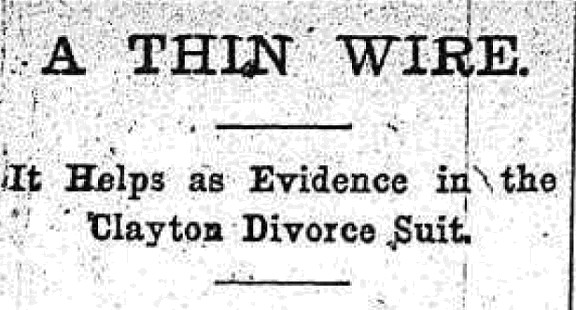
(To see Pt. I of Hijinks on Herkimer) It was not too long before, on one specific occasion, Wolfram took notice of Clayton approaching and entering their apartment building. Wolfram must have had a mouse’s ear, because he discerned from the top floor of the building that Ransom had not come upstairs but had entered an apartment on one of the first two floors. Wanting further evidence against Mrs. Oakley, Wolfram slipped down the stairs and went around the side of the house and “walked slowly by” the windows attached to Mrs. Oakley’s apartment, one of which belonged to her bedroom. As the blinds to the flat were “just a little open,” Wolfram peered though and saw the married man, Ransom, in Mrs. Oakley’s bedroom, a scandalous show of moral laxity at the time. Two nights later, Wolfram viewed Ransom returning to the apartment building and, subsequently, to Mrs. Oakley’s apartment. Wolfram must have drawn murmurs from the gathered crowd in the courtroom when he said what he observed next: Ransom did not depart Mrs. Oakley’s apartment until 6 am the following day. Determined, on the third try, to get the evidence that he needed to have Oakley banished from his building, Wolfram decided he would convince himself once and for all that what he had seen was enough to have her removed. Going out into the house’s front yard, he took a piece of thin wire with him and “fastened it to the gate so that when it was […]